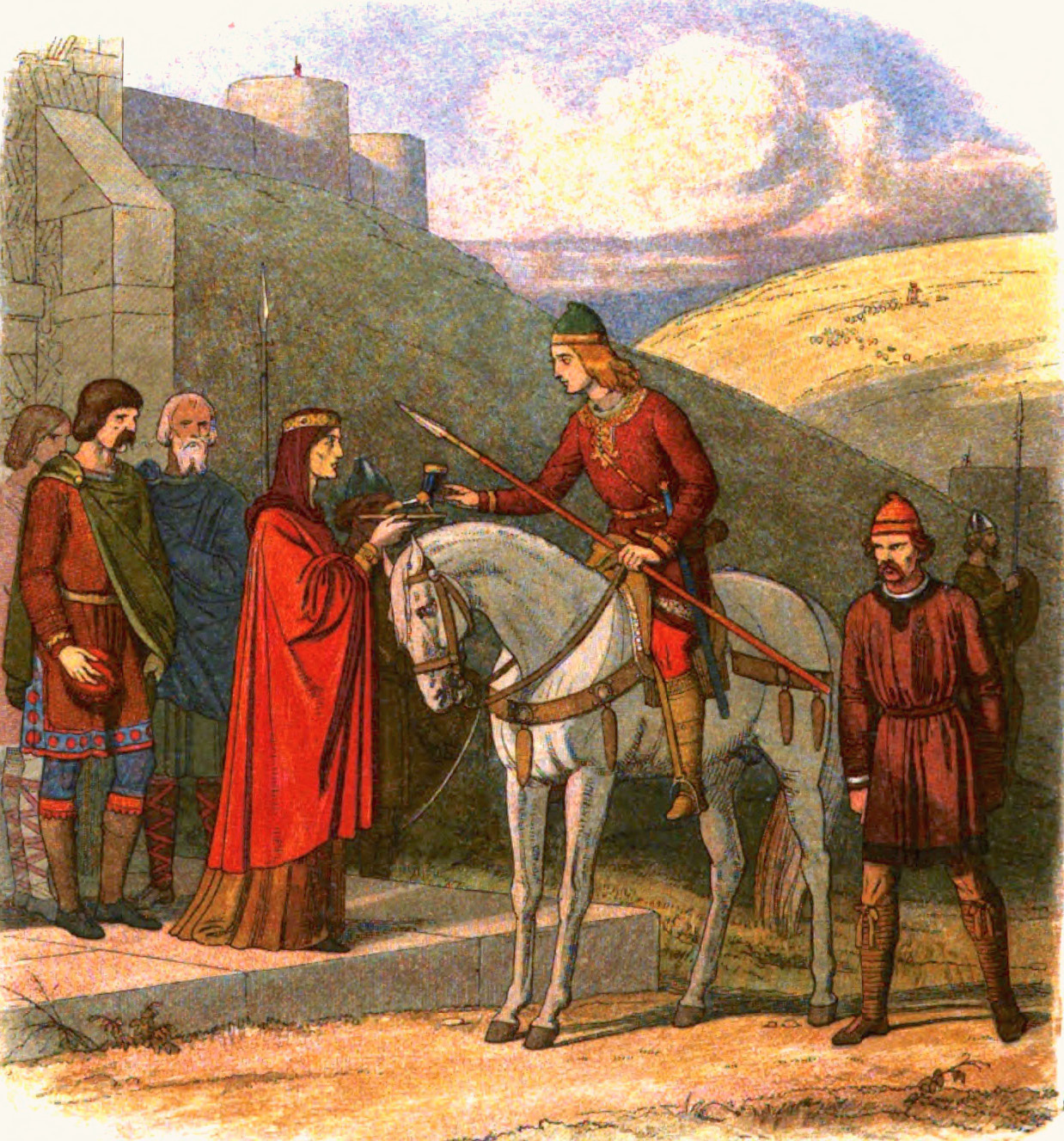|
Ælfthryth (wife Of Edgar)
Ælfthryth ( – 1000 or 1001, also Alfrida, Elfrida or Elfthryth) was Queen of the English from her marriage to King Edgar in 964 or 965 until Edgar's death in 975. She was a leading figure in the regency during the minority of her son King Æthelred the Unready between 978 and 984. Ælfthryth was the first wife of an English king known to have been crowned and anointed as queen. She had two sons with Edgar, the ætheling Edmund (who died young) and King Æthelred the Unready. Ælfthryth was a powerful political figure and possibly orchestrated the murder of her stepson, King Edward the Martyr, in order to place her son Æthelred on the throne. She appeared as a stereotypical bad queen and evil stepmother in many medieval histories. Early life Ælfthryth was the daughter of Ordgar, Ealdorman of Devon. Her mother was a member of the royal family of Wessex. The family's power lay in the west of Wessex. Ordgar was buried in Exeter and his son Ordwulf founded, or refounded ... [...More Info...] [...Related Items...] OR: [Wikipedia] [Google] [Baidu] [Amazon] |
Queen Consort Of The English
The English royal consorts listed here were the spouses of the reigning monarchs of the Kingdom of England, excluding joint rulers William III of England, William III and Mary II who reigned together in the 17th century. Most of the consorts were women, and enjoyed titles and honours pertaining to a queen consort; some few were men, whose titles were not consistent, depending upon the circumstances of their spouses' reigns. The Kingdom of England merged with the Kingdom of Scotland in 1707, to form the Kingdom of Great Britain. There have thus been no consorts of England since that date. Athelstan, Edward the Martyr, Harold Harefoot(?), Harthacnut, William II of England, William II, Edward V, Edward VI and Elizabeth I are all excluded from this list because they never married. House of Wessex, 886–1013 House of Denmark, 1013–1014 House of Wessex (restored, first time), 1014–1016 House of Denmark (restored), 1016–1042 House of Wessex (restored, second time), 10 ... [...More Info...] [...Related Items...] OR: [Wikipedia] [Google] [Baidu] [Amazon] |
Byrhtferth
Byrhtferth (; ) was a priest and monk who lived at Ramsey Abbey in Huntingdonshire (now part of Cambridgeshire) in England. He had a deep impact on the intellectual life of later Anglo-Saxon England and wrote many computistic, hagiographic, and historical works.''The Blackwell Encyclopedia of Anglo-Saxon England'', ed. Michael Lapidge (1991)''Medieval England: an encyclopedia''; editors: Paul E. Szarmach, M. Teresa Tavormina, Joel T. Rosenthal. New York: Garland Publishing (1998) He was a leading man of science and best known as the author of many different works (although he may not have written many of them)."The Old English Canon of Byrhtferth of Ramsey", Peter S. Baker. ''Speculum'', Vol. 55, No. 1. (1980) His ''Manual'' (''Enchiridion''), a scientific textbook, is Byrhtferth's best known work. He studied with Abbo of Fleury, who was invited to Ramsey Abbey by Oswald of Worcester to help teach. Abbo was there during the period 985 to 987, and became a large influence on By ... [...More Info...] [...Related Items...] OR: [Wikipedia] [Google] [Baidu] [Amazon] |
Æthelwold Of Winchester
Æthelwold of Winchester (also Aethelwold and Ethelwold, 904/9 – 984) was Bishop of Winchester from 963 to 984 and one of the leaders of the tenth-century monastic reform movement in Anglo-Saxon England. Monastic life had declined to a low ebb in England in the ninth century, partly because of the ravages caused by Viking attacks, and partly because of a preference for secular clergy, who were cheaper and were thought to serve the spiritual needs of the laity better. Kings from Alfred the Great onwards took an interest in the Benedictine rule, but it was only in the middle of the tenth century that kings became ready to commit substantial funds to its support. Æthelwold became the leading propagandist for the monastic reform movement, although he made enemies by his ruthless methods, and he was more extreme in his opposition to secular clergy than his fellow reformers, Saint Dunstan and Oswald of Worcester. He is nevertheless recognised as a key figure in the reform m ... [...More Info...] [...Related Items...] OR: [Wikipedia] [Google] [Baidu] [Amazon] |


